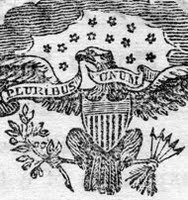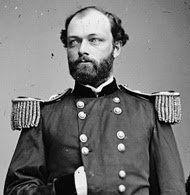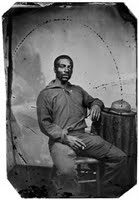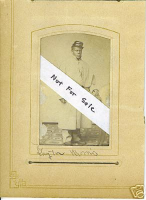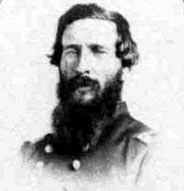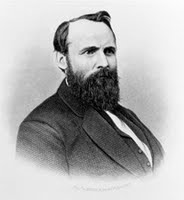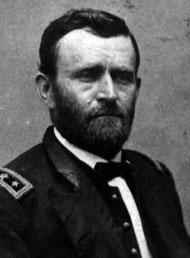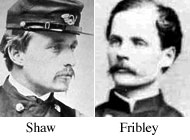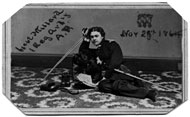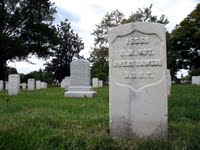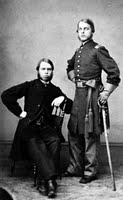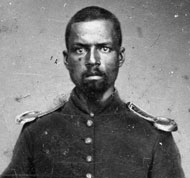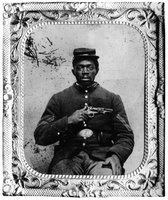The USS Monadnock: Great Naval Wonder
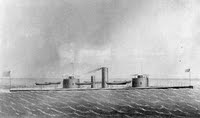
Found this wonderful description of the twin-turreted monitor USS Monadnock (pictured, right) while researching the life and naval service of a sailor who served aboard her from 1865-1866. This account, excerpted from a letter written by a correspondent named "Roland," is dated San Francisco, June 25, 1866. It was published in the August 4, 1866, issue of the Pacific Commercial Advertiser (Honolulu, Hawaii). I've added notes [in brackets] when appropriate.
Crowds are daily visiting this great naval wonder and the war steamer Vanderbilt, both lying off in the bay, and which arrived a day or two after we came into port. In the language of Jack Downing, I and Gen. [Irvin] McDowell together visited the first named. At a distance she looks like a half sunken ship, standing less than two feet out of water. As you approach her, flat and motionless, she bears nothing formidable or terrifying in appearance, but rather looks tame and sleepy. When once aboard, and you proceed to enter the aperture of one of her turrets, facing the grim, open mouth, of one of those famous Dahlgren “swamp angels,” [reference to the famed monster gun used by the federals in the 1863 bombardment of Charleston, S.C.] you begin to wake up to the sense of your “situation.” These enormous guns are fourteen feet in length, black and menacing, with 480 lb. balls laying beside them and consuming 60 lbs. of powder at a charge. After seeing them, you can soon begin to form a conception of their death-dealing, destructive qualities. I put my head into the muzzle of one, and concluded I had a very small head or that was a very large hole. One of the officers told me that while the monitor was at Rio, Brazil, they found one of the Brazilian officers, with his knife, trying to chip or pick into the guns, suspecting that they might be only “quaker guns,” made of wood. [Reference to wooden logs painted black; used by both sides in the Civil War to deceive their adversary.] Surrounding the inside of the turrets are suspended canvass, thickly lined with felt, which serves to deaden the sound, so that the noise of the discharge is no greater inside the turret than outside. While the Emperor of Brazil was on board, at his request two guns were loaded to be fired, himself to be allowed to discharge them. After discharging the first he hastily withdrew, requesting them to omit the other.Photo from a U.S. navy lithograph.
On the deck lay two “Baulseys” or cigar shaped water-tight boxes, about 28 feet long, and 5 feet in diameter at the center, for supplies and water in case of disaster or shipwreck. But what strikes a visitor as the most peculiar and novel are the band-box turrets, 46 feet in circumference, 10 feet high, and 11 inches thick, with little horizontal spaces, cut half an inch in width four or five inches long, for sight holes. The outside of these are ingeniously protected by a little stairway of steps, cut into each successive layer of plate, till it widens to something over a foot long and four inches wide, forcing a ball when striking to change its inclination and dart either upwards or downwards. On the top of the turrets, are removable pilot houses never used in action. The compasses are immersed in alcohol to prevent the attraction of the magnet towards the iron. In the fire rooms the average heat is 150 to 160 degrees, but it has touched 175. The highest speed attained was 9 knots an hour, but usually she makes 6 1/2 knots. She draw 12 1/4 feet of water, and has 18 engines for all purposes. She is soon to be taken to the navy yard and laid up, her officers and crew returning to New York on the steamer of July 10th or 20th.
Labels: civil war, history, ironclad, monadnock, monitor, navy, ship, u.s., united states, uss
